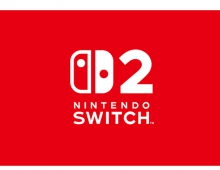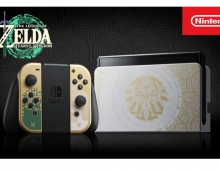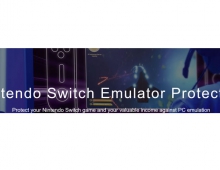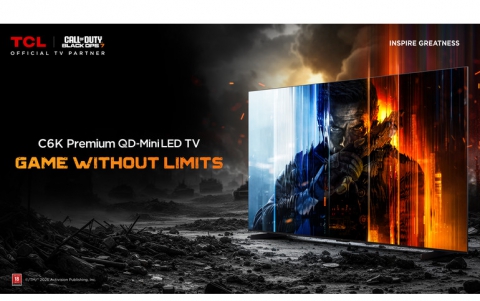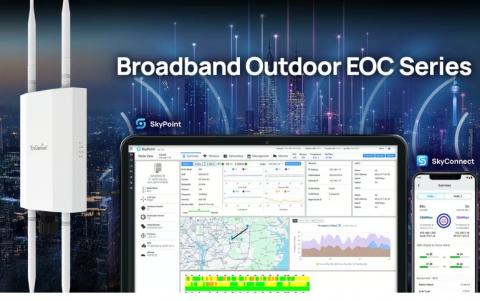
Nintendo Executive Hints at Coming Price War
Nintendo's next generation video game machine won't be out until 2006, but Reggie Fils-Aime, executive vice president of sales and marketing for Nintendo of America hinted this week the company might have a surprise up its sleeve.
Microsoft's Xbox 360 has adopted a two-tier price strategy ($299 for a bare bones version and $399 for a souped-up machine). Sony, meanwhile, has shouted from the rooftops the PS3 would be a pricey piece of equipment. Nintendo, though, seems ready to lowball its competitors on the retail front.
"Value has been a key card for us this generation and we'll continue to play it," Fils-Aime told CNN Money. "Do I expect us to be at a lower price point than our competition? Yes I do. Have we determined a price yet? No we haven't."
Nintendo employed this strategy at the beginning of this round of the console wars in 2001. While Sony and Microsoft released their video game machines at $299, the GameCube initially sold for $100 lower. Ultimately, the move didn't work as well as hoped. The GameCube is third in hardware sales, behind PlayStation 2 and Xbox, a position typically blamed on a weaker portfolio of third-party games and (initially, at least) the machine's boxy design, which even senior officials acknowledge looks childlike.
"I think there were some lessons we learned with the GameCube that we need to apply to the Revolution," said Fils-Aime. "First, we've got make sure that the titles in the first six months are strong and can drive sales. We've also got to make sure the console is attractive visually. And we've got to deliver on the right consumer needs. With GameCube, at the time, portability was thought to be a big factor ? that's why it has a handle. Obviously, that wasn't the case."
The Revolution (which will likely to be called something else when it hits store shelves) is aimed at a wider audience than the GameCube or any of Nintendo's previous systems. While it will play DVD movies, its primary focus will be games. The Xbox 360 and PlayStation 3 will focus strongly on games as well, of course, but have their eyes on a bigger prize ? digital domination of the living room. Nintendo has said it wants, instead, to attract people who do not consider themselves gamers.
There are still plenty of mysteries about the Revolution, of course. For example, will the Revolution ship with any of the auxiliary devices for the controller, a motion-sensitive unit that looks like a TV remote control? The answer? To be determined. "A lot of that will be driven by our first party games," said Fils-Aime.
One thing's for sure: The Revolution will not support high definition video, a marked divergence from the path Microsoft and Sony are taking. And it's not something the company is re-thinking, despite the fervent hopes of some hardcore gaming fans.
Casual and non-gamers, the company feels, are less interested in flashy graphics than enjoyable games. And the large files that go hand in hand with high definition video result in "almost interminably long" load times for games, said Fils-Aime, something that would also be detrimental to a mainstream audience.
"What we'll offer in terms of gameplay and approachability will more than make up for the lack of HD," he said.
As for existing products, don't be surprised if more facelifts are on the way for existing products. Nintendo unveiled a streamlined Game Boy Advance earlier this year (much along the lines of Apple's iPod Nano), dubbed the Game Boy Micro.
The logical choice for the next facelift would be the Nintendo DS. Last year's hottest holiday gift has seen its popularity grow as Nintendo and third party publishers have put out increasingly appealing software, but the device itself is fairly ugly by gaming standards.
Fils-Aime hinted a revamped DS is in the works: "As soon as [the DS] was launched, we started looking at ways to tweak it visually."
One final note for holiday 2005 shoppers: While Nintendo seems set to be a price spoiler next year, don't look for the GameCube, Game Boy Advance or Nintendo DS to get any cheaper this year. There is "nothing planned right now" in terms of price cuts, according to Fils-Aime.
"Value has been a key card for us this generation and we'll continue to play it," Fils-Aime told CNN Money. "Do I expect us to be at a lower price point than our competition? Yes I do. Have we determined a price yet? No we haven't."
Nintendo employed this strategy at the beginning of this round of the console wars in 2001. While Sony and Microsoft released their video game machines at $299, the GameCube initially sold for $100 lower. Ultimately, the move didn't work as well as hoped. The GameCube is third in hardware sales, behind PlayStation 2 and Xbox, a position typically blamed on a weaker portfolio of third-party games and (initially, at least) the machine's boxy design, which even senior officials acknowledge looks childlike.
"I think there were some lessons we learned with the GameCube that we need to apply to the Revolution," said Fils-Aime. "First, we've got make sure that the titles in the first six months are strong and can drive sales. We've also got to make sure the console is attractive visually. And we've got to deliver on the right consumer needs. With GameCube, at the time, portability was thought to be a big factor ? that's why it has a handle. Obviously, that wasn't the case."
The Revolution (which will likely to be called something else when it hits store shelves) is aimed at a wider audience than the GameCube or any of Nintendo's previous systems. While it will play DVD movies, its primary focus will be games. The Xbox 360 and PlayStation 3 will focus strongly on games as well, of course, but have their eyes on a bigger prize ? digital domination of the living room. Nintendo has said it wants, instead, to attract people who do not consider themselves gamers.
There are still plenty of mysteries about the Revolution, of course. For example, will the Revolution ship with any of the auxiliary devices for the controller, a motion-sensitive unit that looks like a TV remote control? The answer? To be determined. "A lot of that will be driven by our first party games," said Fils-Aime.
One thing's for sure: The Revolution will not support high definition video, a marked divergence from the path Microsoft and Sony are taking. And it's not something the company is re-thinking, despite the fervent hopes of some hardcore gaming fans.
Casual and non-gamers, the company feels, are less interested in flashy graphics than enjoyable games. And the large files that go hand in hand with high definition video result in "almost interminably long" load times for games, said Fils-Aime, something that would also be detrimental to a mainstream audience.
"What we'll offer in terms of gameplay and approachability will more than make up for the lack of HD," he said.
As for existing products, don't be surprised if more facelifts are on the way for existing products. Nintendo unveiled a streamlined Game Boy Advance earlier this year (much along the lines of Apple's iPod Nano), dubbed the Game Boy Micro.
The logical choice for the next facelift would be the Nintendo DS. Last year's hottest holiday gift has seen its popularity grow as Nintendo and third party publishers have put out increasingly appealing software, but the device itself is fairly ugly by gaming standards.
Fils-Aime hinted a revamped DS is in the works: "As soon as [the DS] was launched, we started looking at ways to tweak it visually."
One final note for holiday 2005 shoppers: While Nintendo seems set to be a price spoiler next year, don't look for the GameCube, Game Boy Advance or Nintendo DS to get any cheaper this year. There is "nothing planned right now" in terms of price cuts, according to Fils-Aime.



